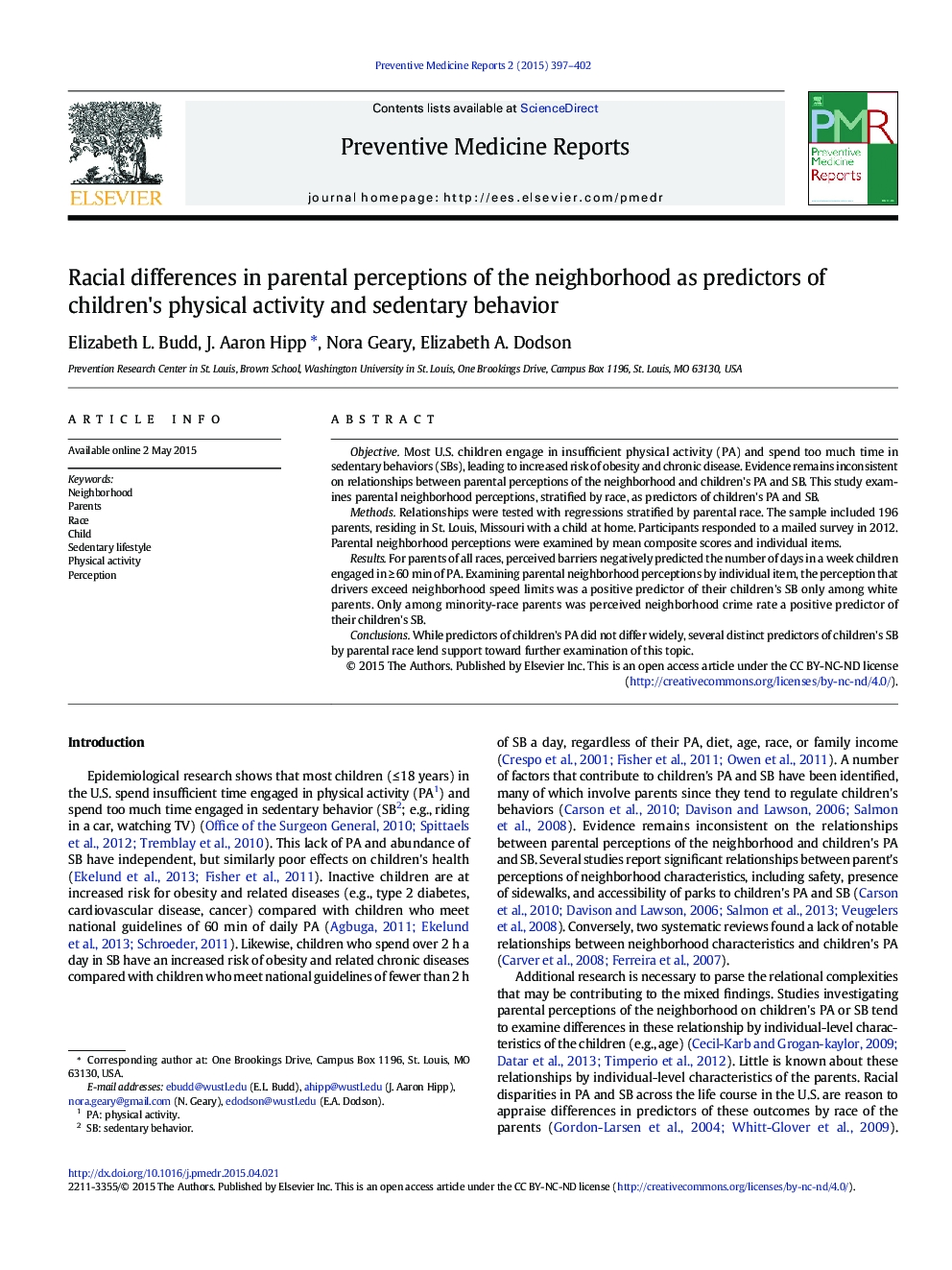| Article ID | Journal | Published Year | Pages | File Type |
|---|---|---|---|---|
| 4202446 | Preventive Medicine Reports | 2015 | 6 Pages |
•We examine parental neighborhood perceptions by race and children's behaviors.•For all parents, perceived barriers negatively predict children's activity.•For white parents, speeding cars positively predict children's sedentary behavior.•For minority-race parents, crime positively predicts children's sedentary behavior.•Results could inform tailored strategies for reducing children's sedentary behavior.
ObjectiveMost U.S. children engage in insufficient physical activity (PA) and spend too much time in sedentary behaviors (SBs), leading to increased risk of obesity and chronic disease. Evidence remains inconsistent on relationships between parental perceptions of the neighborhood and children's PA and SB. This study examines parental neighborhood perceptions, stratified by race, as predictors of children's PA and SB.MethodsRelationships were tested with regressions stratified by parental race. The sample included 196 parents, residing in St. Louis, Missouri with a child at home. Participants responded to a mailed survey in 2012. Parental neighborhood perceptions were examined by mean composite scores and individual items.ResultsFor parents of all races, perceived barriers negatively predicted the number of days in a week children engaged in ≥ 60 min of PA. Examining parental neighborhood perceptions by individual item, the perception that drivers exceed neighborhood speed limits was a positive predictor of their children's SB only among white parents. Only among minority-race parents was perceived neighborhood crime rate a positive predictor of their children's SB.ConclusionsWhile predictors of children's PA did not differ widely, several distinct predictors of children's SB by parental race lend support toward further examination of this topic.
